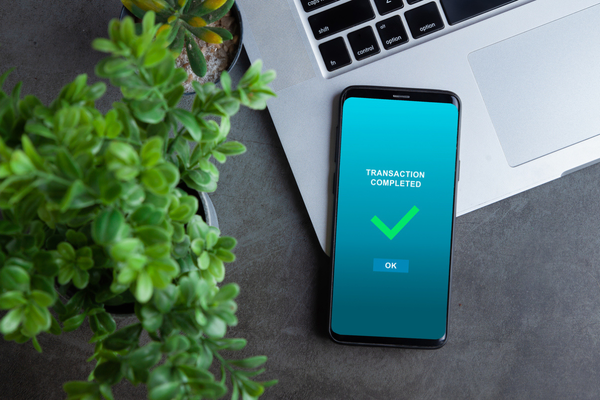Using machine learning to support the underbanked
Sponsored by Braviant Holdings
A large proportion of Americans are credit challenged – but they don’t have to be left behind
Most people are likely to need credit at various points throughout their lives. Financial emergencies, such as a major car repair or large medical bill, can happen at any time. Last year, 28 per cent of adults in the US experienced an unexpected expense of, on average, $3,500. And the need for credit goes beyond emergencies. Major purchases such as home appliances, electronics or a new car are typically financed rather than purchased outright.
Sadly, many US households are “underbanked”, forced to go outside the traditional banking system for important financial services such as credit products. There are around 24 million of these households, representing nearly 50 million adults.
The importance of credit
The ability to access credit typically requires already having a satisfactory credit score. However, many US households (nearly 20 per cent in 2017) don’t even have a credit score, often because they have never had a credit card. Many others – 34 per cent according to Experian – have only a fair or poor FICO credit score. This creates a paradox where non-prime and “credit invisible” consumers aren’t able to access credit, and because they don’t have access, they also aren’t able to build credit for the future.
So what happens to those underbanked families who can’t access credit from a traditional bank? They may have to pawn valuable possessions, take out an unaffordable payday loan, or pay expensive overdraft fees. And the problems go beyond simply figuring out how to pay for things.
A poor credit rating can stop you from getting a cell phone contract. It can mean you have to pay a deposit to access basic utilities such as gas and electricity. Landlords generally check your credit rating when deciding whether to rent to you. Your car insurer may take a look at your credit scores when deciding what rates you’ll pay. And your credit rating can even affect whether you are offered a job or not.
In an ideal world, existing banks would provide financial inclusion to the underbanked. Unfortunately, they struggle to do so for various reasons, ranging from profitability challenges to safety and soundness concerns. But there is a solution: with the right technology and data, serving the underbanked can be profitable and sustainable for the lender while also improving financial outcomes for the borrower.
Technology is critical because it brings down the cost to service customers who only generate small profits. And the right technology can be transformative. In Kenya, the M-Pesa, a mobile-only payment system, was introduced as far back as 2007. By 2016, 90 per cent of the adult population was using it to get paid, pay bills and take out loans.
Using data creatively also helps. Credit providers can better serve the underbanked by looking beyond a traditional FICO score. For example, a consumer who has made regular on-time payments of rent and utility bills and has a consistent track record of positive cash flows may be creditworthy today despite a less than perfect credit history in the past.
Braviant: credit for the underbanked
One company making inroads into the underbanked market is Chicago-based Braviant, whose team of technologists, data scientists and fintech veterans has developed a new approach to lending.
Braviant provides credit services that aim to better suit the needs of its sub-prime borrowers. A typical payday loan must be repaid in a few short weeks. The need to come up with a $500 repayment in as little as 10 to 14 days after borrowing $400 can cause another crisis in the life of the borrower. This problem is often compounded when a customer takes out multiple payday loans to meet a larger need of $2,000 or $3,000, for example. By comparison, Braviant offers larger loan amounts that can be paid back in small, affordable installments over several months or even a couple of years. Instead of spending a large portion of their salary to repay a debt, customers still have access to 80 to 90 per cent of their net paycheck after making a loan payment.
Braviant is able to offer these longer-term loans because it understands its customer base better. Its proprietary decision models look beyond a traditional credit score to assess a person’s true ability and willingness to repay. Instead of relying solely on a traditional FICO score, Braviant builds its own custom algorithms that are powered by machine learning and take into account a rich set of alternative data sources.
This means that Braviant’s models are much more accurate at predicting the likelihood of default. As a result, Braviant can make better credit decisions and approve borrowers who others would decline while simultaneously lowering the cost of credit by weeding out applicants who don’t have the ability or willingness to repay.
A key challenge that companies who lend to sub-prime borrowers face is that small, unsecured loans are often less profitable. Of course, rates can be pushed up to solve this problem, but this makes the loans less affordable. Braviant solves this problem through its risk-based pricing model, which identifies the right cost of credit for each new first-time borrower and empowers returning customers to graduate lower rates over time. In fact, Braviant’s mission is to create a “Path to Prime®” whereby customers can not only access the credit they need right now, but also build credit history and qualify for lower rates over time as they work to access mainstream credit products in the future. One way Braviant helps its customers increase their creditworthiness is by partnering with Experian Boost to give them credit for paying recurring bills such as Netflix, phone and utilities.
So far, Braviant has extended more than $300 million in credit to nearly 250,000 borrowers. In the past year, Braviant has also started to offer its marketing, technology and analytics services to traditional banks in order to further close the credit gap for credit-challenged consumers.
Many people think sub-prime is a tiny subset of people at the very bottom of the credit spectrum. The reality is that much of middle America is considered non-prime. Tens of millions lack access to basic financial products such as credit cards or auto loans that others may take for granted. These consumers deserve fair, transparent credit solutions that help them achieve better financial outcomes. Powered by technology and data, Braviant is one of the few lenders serving this huge market effectively and helping non-prime borrowers take control of their financial lives.
written by Jeremy Swinfen-Green for Braviant Holdings

Business Reporter Team
Related Articles
Most Viewed
23-29 Hendon Lane, London, N3 1RT
23-29 Hendon Lane, London, N3 1RT
020 8349 4363
© 2024, Lyonsdown Limited. Business Reporter® is a registered trademark of Lyonsdown Ltd. VAT registration number: 830519543
Join the Business Reporter community today and get access to all our newsletters, and our full library of talk show episodes
Join the Business Reporter community today and get access to all our newsletters, and our full library of talk show episodes





